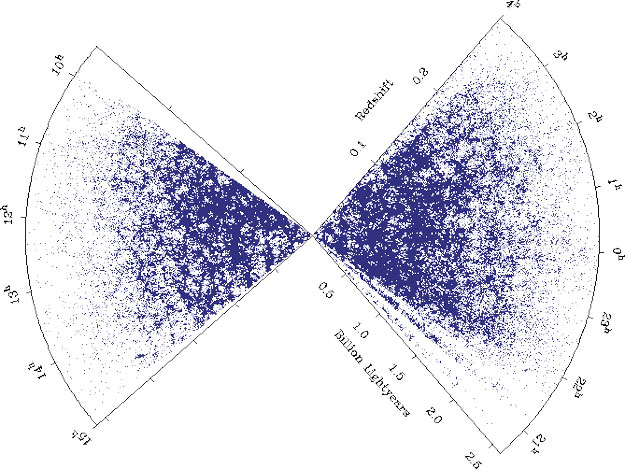2dF Sees Waves of Galaxies

Explanation:
How are galaxies distributed in the universe?
This question is of more than aesthetic interest
because the answer likely holds clues to
composition of the universe itself.
The
above map shows the distribution of nearly
200,000
galaxies and is the latest answer obtained
by one of the most complex astronomical instruments yet created: the
Two-Degree Field (2dF) system.
The
2dF system measures galaxy
redshifts, allowing astronomers to estimate
distances to some of the millions of galaxies visible,
and hence to make a
three-dimensional map of the local universe.
Although the distribution of galaxies appears
nearly uniform on the largest scale,
waves of galaxies are
discernable extending up to 100 million light-years.
Detailed analyses of the incoming data
indicate that to create such a network of waves, normal
baryonic matter must make up only 15 percent of
all matter, while all matter must make up only about 30 percent of that
needed to make the
universe
geometrically flat.
Is the remaining 70 percent
dark energy?
Authors & editors:
Robert Nemiroff
(MTU) &
Jerry Bonnell
(USRA)
NASA Web Site Statements, Warnings,
and Disclaimers
NASA Official: Jay Norris.
Specific
rights apply.
A service of:
LHEA at
NASA /
GSFC
& Michigan Tech. U.

